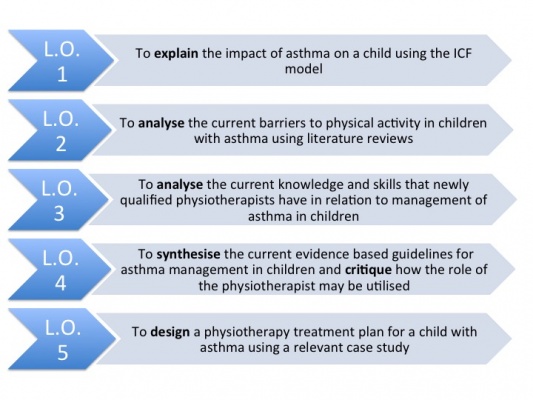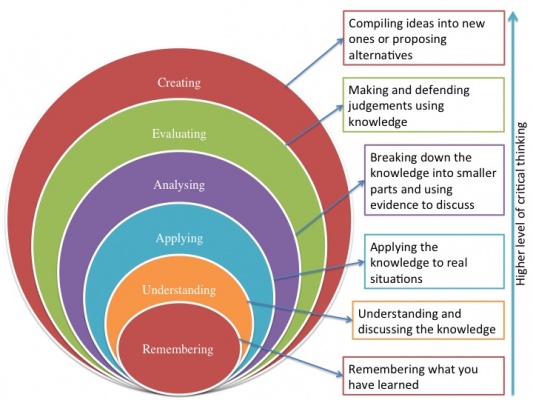Physical Inactivity in Children with Asthma: A Resource for Physiotherapists
Welcome to this online Physiopedia resource on Physical inactivity in children with Asthma: The Role of Physiotherapists. This page has been designed by a group of 4th Year Physiotherapy students from Queen Margaret University in Edinburgh, as part of the Contemporary and Emerging Issues in Physiotherapy module.
<br>
This online resource will take approximately ten hours to complete and may be used for self-study or continuing professional development (CPD), however, this should be viewed as a rough guide due to the diverse learning styles and preferences people possess. In order to facilitate this, the resource has been split into several sections, which enables the user to undertake the learning and activities as and when required. Users can choose to complete the resource on their own, with fellow work colleagues and managers or as a group with feedback given on the appropriate section.
<br>This learning resource has been designed to be informative, interactive and engaging for the user, with maximum benefit gained when full cooperation and application is shown. The user will be required to undertake in-depth reading, critical reflective practice, quizzes, watch videos and complete short clinical case studies to enhance and facilitate a deeper learning.<br>As mentioned above, peoples learning styles vary considerably and due to life being multimodal there are seldom instances where one mode is used, or is sufficient, therefore a diverse range of material has been incorporated to address the different learning styles. Prior to beginning this resource it may be beneficial to undertake the VARK learning styles questionnaire in order to correctly identify your preferred learning style (LINK).<br>
<br>
Included in the learning resource will be three different types of action boxes, which all have a different colour and require a different action. They are key points (red), <span style="font-size: 13.28px;">activity (blue) and </span><span style="font-size: 13.28px;">reflection (green), and will look as follows: </span>
<br>
<br>
<br>
<br>
<br>
<br>
Aims and Learning Outcomes[edit | edit source]
This interactive online resource aims to provide final year physiotherapy students and newly qualified physiotherapists an opportunity to develop and expand their clinical knowledge on childhood asthma and understand the impacts of physical inactivity. Combining a balance of evidence based research, theory, policy documents and elements of interactive learning; it also aims to encourage reflection to highlight physiotherapist attitudes and skills to managing asthma in children. Although this online resource highlights in detail many of the skills and resources needed when managing physical inactivity in children with asthma, further guidance and training may be required for application within clinical practice. <br>
<div><br></div>
The learning outcomes outlined in Figure 1. below have been formulated using blooms taxonomy (reference) in order to establish the appropriate level of proficiency which is expected of newly qualified band 5 physiotherapists with particular reference to the Knowledge and Skills Framework (KSF) LINK. <br>
<br>
<br>
<br><br>
<br>
<br>
<br>
<br>
<br>
<br>
Figure 1. Learning Outcomes
<br>
<br>
<br>
<br>
<br>
<br>
<br>
<br>
<br>
<br>
<br>
<br>
<br>
<br>
Figure 2. Bloom's Taxonomy











